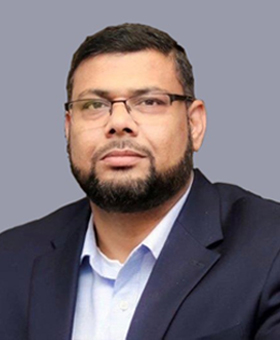

Macrosoft is constantly engaged in talent acquisition – in a big way – it is a core activity of our company. As a technology services company, Macrosoft depends critically on the talent of its members, and on being able to acquire new talent as needed, and equally important keeping talent that is already part of our company. This paper is about our talent acquisition engine. Another paper in this series will focus on our talent management practices intended to retain our best talent.
Every week there are dozens of individual talent acquisition efforts going on in different parts of the company. This is especially so since our company is growing rapidly. And with the disruption to a remote work environment, competition for top talent is more intense and more broadly based than ever before. There is no way to hide from this intense competition.
Talent acquisition at Macrosoft is a very complex machine, and there are many subprocesses that need to work together smoothly to make it all happen well. An added complication is the fact that there are six separate lines of businesses within Macrosoft, and the talent acquisition process is quite different across the different LOBs.
There are two distinct factors that have influenced our thinking and strategic planning for our talent acquisition engine. The first is the strategic goal of our company to double size over the next 3 years. The second concerns being ready for disruptions or secular trends that may make talent acquisition much more difficult and risky at a future point.
Given the strategic direction we are now embarking on to double company’s size and revenue over the next 3 years, obviously, we cannot even think to do that without having in place a robust capability for talent acquisition across all LOBs.
The good news for us is – most of the required capabilities to meet this scale up are now in place and working well. We will need to enhance small things here and there, and certainly we will need to scale up these capabilities to meet the new corporate goals we have set, but for the most part the basic structure is already working well. We believe strongly we should be able to make all of this happen to meet the goal of doubling our company in the next 3 years.
Regarding disruptions and trends, we enumerate a number below and have thought long and hard about how our recruitment engine will perform under each scenario. We describe those below. Of course, there is the unexpected disruption ‘out of left field’ that may come our way at any point. As noted, all we can do there is make our machine as resilient as possible and to be aware at all times of changes happen in the marketplace.
So, the purpose of this paper is to provide a detailed description of all aspects of our digital talent acquisition process across Macrosoft’s six lines of business. As noted, there will be a companion paper on our talent management processes, which also have become super critical given the intense competition for talent across the world because of the remote work environment we are now in. We are of course not immune to this talent competition race.
Macrosoft’s Acquisition Engine Profile
As noted above, there are six main lines of business within Macrosoft. All are growing this year and we are projecting significant growth across all LOBs to achieve the corporate goal of doubling in 3 years. The six lines of business are the following
- Development Teams
- Enterprise Technologies
- Legacy Migration
- CCM/Quadient
- NLP/Call Miner
- Process Automation
Readers interested to learn about any one of these LOBs should look through our web site, where there are detailed descriptions of each LOB along with the types of services we provide for each.
There are three regional centers that make up Macrosoft. The HQ location is in NJ US, and there are two international development centers, one in Trivandrum India and the other in Lahore Pakistan. Of course, the entire company is now working remotely, so our office facilities are essentially empty. As detailed in other papers we are achieving excellent levels of productivity and quality outputs in this remote work environment.
So 6 LOBs and 3 regional centers is the structure of Macrosoft that our Talent Acquisition engines must respond to. The below table lays out essentials of the recruitment and related talent acquisition engines we currently have in the company. We believe building on these engines will allow us to reach our strategic goal of doubling the company by 2024.
| MAC US | Large technical recruitment team in Mac India for servicing recruitment needs for US market | Number of Recruiters: 20 in 2021 30 in 2022 40 in 2023 55 in 2024 |
| Mac Campus program for Quadient | Classes of 10 increasing to 20 in future years At least 200 to be trained over the next 3 years | |
| Mac Campus programs for Call Miner and Process Automation | To start up late this year or early next Students for these program will need to have BS degrees in CS/STEM For Process Automation the training will be on Celonis and UiPath | |
| Mac India | Recruitment team in India for recruitment of people in India | Currently 2 people, increasing to 5 in the next year, and further increases after that as needed |
| Mac Campus program for Quadient | Classes of 10 increasing to 20 in future years At least 250 to be trained over the next 3 years | |
| Mac Pak | Recruitment team in Pakistan for recruitment of people in Pakistan | Currently 2 people, increasing to 5 in the next year, and further increases after that as needed |
| Mac Campus programs for Call Miner and Process Automation | To start up late this year or early next Students for these program will need to have BS degrees in CS/STEM For Process Automation the training will be on Celonis and UiPath | |
| University work programs for Students leading to employment after graduation | Targeted to top universities in Pakistan Macrosoft is highly regarded in Pakistan so we can tap into the best universities |
Trends and Possible Disruptions Affecting Talent Acquisition
In this section we lay out exogenous factors and disruptions we feel can significantly impact talent acquisition strategies. The impacts of these disruptions and trends can be either positive or negative or both at the same time. The key consideration for us is that we absolutely need to be fully aware of these trends and disruptions as soon as possible after they start occurring and modify our talent acquisition strategies to either take advantage of those that are positive or defend strongly or move to ‘plan B’ if the impact will have a negative impact on our current talent acquisition processes.
- Remote Work Environment
This disruption came on suddenly in March 2020 as a result of the pandemic and has persisted since then. In our view, it is likely to continue for a much longer period especially for our business sector, IT. And afterwards it is likely to be replaced by a hybrid work environment, our company is definitely not going back to a 5-day a week in-office model. We are now planning on a hybrid work model with in-office work on the order of 1-2 days per week. This remote work disruption has had positive impacts on Macrosoft (in the sense of a silver lining) as well as some recent effects that are negative.
On the positive side, we have been able as a company to fully meet the challenges of a total remote work environment. In fact, we believe we are now achieving levels of productivity and quality work that are greater than pre-pandemic. And we are expecting further increases in the next year or two as we enhance all processes in the company including those related to communications, management oversight, project management and client interactions. So on-net this disruption has been positive for our company and we are planning our future accordingly.
On the negative side, which has only recently been emerging, is the fact that ‘everyone’ in the tech industry is now working remotely. So the largest corporations can now expand their searches for the best talent to at least include the entire country in which they are operating. For example, for India, we are now hearing lots of anecdotal evidence that companies like Tata and Infosys are advertising for talent throughout India with the commitment of letting the people hired continue to work remotely for at least the next year. They are also offering tremendous pay packages including bonuses and pay rates.
This has become a definite a challenge for us to handle, and we are now in the process of revamping many of our retention and support strategies for employees. This includes not just salary packages but also other factors related to employee engagement, experience and training to create a compelling total rewards package for each of our employees. This will be discussed in detail on the second paper in this series.
- Skills Specializations
For three of our newest LOBs – Quadient, Call Miner, and Process Automation – our success in these areas depends on us having highly trained staff on one or another of these three technology skill areas. The basic challenge we face is there are not yet very large pools of highly trained individuals in all of these tech areas, especially in Pakistan and India. So traditional recruiting of talent simply won’t work to fill our needs as we scale up the company.
Given the large projected scale of team sizes we require and the need to have people with advanced skills in each of these areas, we are compelled to consider other strategies for talent acquisition/expansion. The primary model we have settled on is a two-pronged approach where we recruit a few very senior people from the job boards but develop 90+% of our people through Macrosoft’s Campus Program. We will describe this program in the next section.
So, our Talent Acquisition approach for these three LOBs amounts in large measure to the following: we train our team members ourselves!
- Fluctuating Exchange Rates
Since we have large and expanding technical centers in India and Pakistan and they are run as 100% cost-centers, our costs each month are subject to the exchange rate between the US dollar and the Indian and Pakistani Rupee. Over the many years we have operated these two centers we have had to deal with both long secular trend cycles (up and down) as well as sharp short-term fluctuations in the exchange rates. Over the long run the trending of both exchange rates has been favorable for us, namely the US dollar has appreciated relative to both currencies.
The risk we worry about is a sharp decline in the exchange rate to either country arising out of an unexpected political, economic, or social upheaval in any one of these countries. Given that we are projecting to expand each of these centers to over 500 members over the next three years, any substantial decline in the US dollar vis-à-vis either of these currencies will cause a major imbalance in the way these centers are expected to contribute to the overall company. All our work for clients is estimated based on current exchange rates, and while we normally build in some safety margin, any large negative shift in exchange rates could very negatively affect us.
Our response to a disruptive negative change in exchange rate to either country will, if it continues to persist, necessitate us changing our current plans for scaling up our talent pool in that country, and hence acquisition strategies will need to change according.
- Marketing and Selling Services in Other Regions Besides US
A key component of our strategy to grow Macrosoft is to market and sell our services in other regions of the world, including Europe, Canada, Turkey, and the Gulf States. By 2024 we are projecting 20-25% of company revenue will be from those regions.
So, what does that have any impact on our talent acquisition engines? Here’s how we are thinking about this. If we are talking of work in any one of our LOBs we assume we will need to engage in recruitment of a few people within country/region with the right language and country skills. We may do this by hiring those people directly into Macrosoft or by partnering up with a local company. Either case we will need to recruit one or several people with the right regional background to head this up. Most importantly we will need to know about the employment laws and taxation rules in the countries for which we gain work.
We expect most all the actual work will be done out of our two international development centers, and so that means again we will need to recruit at least some tech PMs at our facilities that are fluent in the language of the client country.
- Regional Social and Political Disruptions
As noted earlier we have worked successfully in both India and Pakistan for over 10 years now, and there have been no significant disruptions to our operations during that entire period. In both countries of course there is always a possibly, however remote, and that is the risk we have to grapple with.
Having everyone working remotely now has lessen/eliminated the risk of a large-scale office-area disruption. We have other backup strategies that we have planned for, including:
- Having most individuals work on their own without network connections for some extended period, followed by uploads of their work to a central server.
- Transfer key individuals to other regions (Gulf States) to continue their work for a period.
- Help key people get H1 visas and prepare for them to come to US on the first signs of trouble.
- On daily basis all software updates done by our international centers are downloaded to servers in the cloud. So worst case the work can be continued by other developers for a limited period.
- It is important to recognize that both Pakistan and India highly value companies like ours that provide employment for their highly skill IT sector workers. Both countries have in place highly advantageous tax arrangements for IT export companies like ours. It is absolutely clear that both countries have and will continue to provide as much support and security protection as possible to the IT export business.
Readers should look for an upcoming paper we are now preparing summarizing all the business incentives and tax benefits that the Pakistan government is now providing to IT export companies. Along with the tremendous talent that is being graduated each year from Pakistani universities it is our view that overall Pakistan is a great country for us to be expanding into.
- Communication Channels
Here the potential problems can be local or region/country wide. If the outage is local we now have quite good resiliency, since everyone is working remotely, so at most any local outage will affect only a few of our workers. If the outage is region or country wide, then we will immediately pursue satellite options at least for our key employees.
- Office Security
Both office locations have physical security options including guards, alerting systems and camera throughout. Right now, all our employees are working remotely, and as indicated earlier, we will be moving to a hybrid model in which most employees continue to work from home. So physical security of our offices, while still important, is less so given the remote nature of our work. And keep in mind, all our team members in both locations use laptops to do their work, and those are now with our employees at their homes. In addition as a company we are now centered in the AWS cloud. So our office have less and less expensive equipment in them.
- Network Security
Here we have taken many very significant steps to enhance our security profile including implementation of Microsoft Endpoint Manager for all our endpoint laptops used by our employees at home, as well as implementing the next generation cloud firewall SonicWall. There is a recent paper describing all our efforts to enhance our security profile across the company. Please take a look to see all we are doing in this area. Clearly, we can never rest on the subject of corporate security; there are many new things we are working on in this regard.
- Unknown Disruption
Of course, there is always the disruption no one ever thought of until it is upon us. In this regard we can only say the following. We are extremely sensitive to any unusual happenings in the world and are in fact looking out for the next potential disruption and ready to take quick action as soon we see it crystalize. Moreover, with a workforce that is now working entirely/mainly from home we feel that disruptions will be harder to take hold over a large portion of our company workers.
Talent Acquisition at Macrosoft by LOB
Lets now delve into more detail on the individual talent acquisition processes we have in place for each LOB.
Quadient
Currently we have over 80 individuals in the Quadient LOB, with over 60 in Mac India and the rest in the US. On average our team members have at least 5 certifications per person, well more than we find available for people on the job boards. We believe we are the only company to have such large numbers of individuals with multiple certifications in the most advanced tools available in the Quadient toolset. Moreover, there are only a limited number of candidates available in the marketplace in the US and India and essentially none in Pakistan and for the most part they do not have the level of skills/certifications we are looking for. Quadient is expecting us to have the best rained and best skilled developers in the marketplace.
Over the next 3 years we are projecting the number of Quadient resources in our company to increase to more than 400 people, with the largest concentration in Mac India, and growing teams in Mac Pak and in the US. So, to fill that staff level we really have no alternative than to train people ourselves. And that is exactly what we are now doing with great success. Training is now occurring in the US and in Mac India, and soon will take place in Mac Pak as well. Each training team contains about 10 people and take about 4 months of formal training followed by about a year of junior level work on our project teams. So for Quadient LOB our training programs are the only realistic way to go.
CallMiner, Process Automation
Long run for both these LOBs we expect to use the same talent acquisition model as we are now using for Quadient, namely internal training via the Macrosoft Campus Program. There is simply not enough highly trained people available in the marketplace, especially in India and Pakistan.
At the moment we have one trained team of Call Miner developers that were trained by Call Miner itself. Going forward we are expecting our own people will do the training to increase this team as needed over the next 3 years. We will use the same training model for the Process Automation LOB where our current focus is on two of the major technology companies in this IT sector, namely UiPath and Celonis.
In both these LOBs we will need to do our recruiting right out of universities, attracting people with CS or related degrees who are ready to get fully trained on one of these technologies. The appealing part of these LOBs for recent graduates is they both involve leading edge technologies, and are really hot in the marketplace and growing tremendously, and best of all involve ever greater amounts of AI/ML with each new release of the software. So, there is a lot of exciting work possibilities we can offer to recent graduates to join our training programs.
Enterprise Technology
The bulk of the work of this LOB is done out of our two international development centers. So, talent acquisition needs to done by each center directly. We have a small recruiting staff in both centers for this purpose and we expect to grow both these teams significantly over the next year.
For the Enterprise Technology LOB we are typically looking for full-stack developers in the Microsoft .Net, Java, or Open Source worlds. In all three of these cases we can find sufficient talented developers in both countries India and Pakistan so our preferred talent acquisition engine in this case is direct recruiting. We recruit talent with varying experience levels ranging from junior to mid-level to experienced. Overall, we like our teams to be pyramid shaped with one senior person for every 3 mid-level people for every 10 junior level people.
As noted, we will need to expand both international center recruitment teams in the next year to meet the expanding technical staff needs of this LOB, given our goal to double the company size in 3 years. About 70% of this LOB is centered out of Mac Pak, and the remaining 30% out of Mac India. We expect this ratio to hold as we expand. In general, we find it easier to recruit highly talented developers in Pakistan than in India. This is true for several reasons: 1. We have deeper ties to the top universities in Pakistan, and 2. there is less of the super intense competition that we face in India for similar levels of talent.
Legacy Migration
Our practice in this LOB is currently centered around VFP to .Net legacy migrations. So, we need people with VFP experience on the one hand and people with .Net experience on the other. Our recruiting of people with .Net experience poses no problem. However, finding top talent in VFP is now very difficult since it is a very old technology. And there is not much hope of training a team of developers on VFP. So, neither traditional recruiting nor training programs will work effectively for securing us the VFP talent we need.
We have solved this dilemma in talent acquisition in a novel way, namely by creating a set of world-class automation tools for automating the conversion of VFP code to .Net code. We currently have a toolset of about 10 individual tools. Taken together these tools can reduce the manual need for VFP developers by about 65-70% so far, and we are projecting that enhancements current in the works will increase that percentage to over 85%. So, that has significantly reduced our need for VFP developers and allowed the VFP team we currently have to extend their efforts over a much broader class of projects.
Most of our largest VFP to .Net migration projects are done primarily out of Mac Pak and include several partner companies in Pakistan that we work with to complete the very largest projects. Some of our largest projects involve team sizes greater than 50 people for over a year or two. Utilizing these partner companies helps reduce our risks, especially end of project risks where it is logistically difficult to smoothly transition such a large team from one project to the next. Working with partner companies lessens the impacts to us of significant down times between projects.
Besides VFP to .Net migrations we are also now working on several additional migration scenarios including VB to .Net and Java to Python. Our projection of growth in this LOB will require us to be successful in the VB to .Net migration area. To ensure success we are now engaged in research and development to build automation tools that will reduce manual efforts by around 85%. So again we will need relatively little VB talent to complete projects in this area. Moreover, there is a much larger pool of VB developers available in all three regions than is the case for VFP developers. Java to Python migrations is a new area we are currently evaluating. We do not expect to be active in this area until at least 2023. It does not play a significant role in our projections of growth thru 2023.
Development Team
The final LOB is Development Teams where we place individual developers or teams of developers with our clients in the US. This LOB is supported by a world-class recruitment team stationed in Mac India. We have written a recent paper profiling this recruitment team and we refer readers to that paper to learn about this tremendous talent acquisition engine. Scaling up this team will be a big part of our growth strategy, and we are highly confident this team will meet its part of our growth strategy.
Final Comments
Please look for the second part of this series of papers on talent management. This paper summarized our efforts in talent acquisition across our three centers and across our 6 LOBs. The next paper in this series will take a deep dive into the processes and strategies we now use to promote employee engagement, including:
- Employee renewal thru skills and competency training and development
- Employee career planning
- Ensuring positive experiences for employee.
We do all this and more with the goal of achieving a very positive total rewards package that keeps our top talent in place with us for many years. We have enhanced so many of our methods and procedures in this human engagement area over the last year and we continue to improve upon where we currently are. Clearly, our most important asset is our top people and so all we do and need to do in this area is critical to our success and our growth strategy.
ByG.N. Shah, Ronald Mueller | Published on October 26th, 2021 | Last updated on August 21st, 2023 | New Technology and Trends, Staffing Services

 Home
Home Services
Services








































